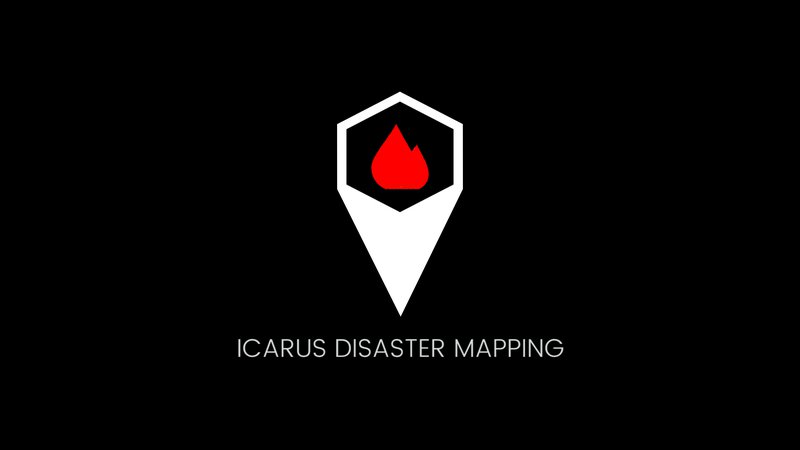Icarus | And YOU can Help Fight Fires!
The Challenge | And YOU can Help Fight Fires!
Icarus Disaster Mapping
Icarus Disaster Mapping uses real-time NASA data supplemented with crowdsourced data, in the form of photographs and geotags, to both warn and guide people out of danger zones when threatened by fires, floods, landslides and riots.

Background
In the last 10 years, 1.7 billion people have been affected by natural disasters globally and 700,000 people have lost their lives in these incidents. The numbers of climate change related incidents consisting of floods, wild fires and severe storms are not set to decrease and it is estimated that we will lose 500,000 people per year by 2030.
There are many strategies being developed to combat the high displacement and death rates caused by natural disasters. At Icarus, we were touched by these statistics and realised that we needed to do more in disaster risk reduction interventions for human lives and livelihoods. We have decided to champion early warning and diversion systems for individuals living in affected areas.
Users are reliant on early warning systems consisting of television, radio and social media reports to get a real-time view of affected areas. Often these reports are disjointed across the platforms and updates are not correlated to matched to popular navigation applications like Google Maps and Waze.
Description
Icarus Disaster Mapping (IDM) creates a crowdsourced information share for real-time disaster tracking. We have provided a platform for you to upload pictures tagged with location, compass, and descriptive data. These images and associated data points will be mapped to the tool.
IDM uses real-time NASA satellite data supplemented with crowdsourced data, in the form of photographs and geotags, to warn and guide people out of danger zones when threatened by fires, floods, landslides and riots. Images are uploaded through a web-based application. IDM uses isochrones to warn people in the immediate vicinity and suggests the safest escape routes from the event. It was determined that users preferred a SMS-based notification system which would direct them to a map showing their proximity to the disaster and suggested route away from danger.
Emergency services also have access to a version of the tool which has additional mapping information. Firefighters, for example, have access to a map of fire hydrants, natural barriers, wind direction and wind speed to guide their tactics in combating the flames.
Resources
The web application was built in React as an interactive cross-platform web-platform enabling the capturing of pictures which are geo-tagged and have a bearing in the direction in which they were taken.
All the application logic, data integrations, and external API integrations are performed in Python, whilst the user profile, NASA fire tracking and user-submitted data is stored in PostgreSQL and Amazon S3’s image storage.
Route optimization and isochrones calculation is enabled through PostGIS on top Open Street Maps data, using PgRouting’s kdijkstra algorithm. No-go zones in the red-zones of disaster proximity are taken into account when including or excluding certain routes.
Twilio integration enables SMS and automated calls to users identified in an area depending on the level of severity of the natural disaster in their area.
Qualitative research was carried out with a sample user set. We were able to show them our project video and explain future development of IDM in order to build their preferences into IDM.
Challenges Faced
Our challenges with the NASA near real-time VIIRS 375 m dataset was extracting high resolution data and providing real-time data to civilians, especially in situations like quick-spreading fires. Thus we came up with the idea of crowdsourcing missing pieces of information.
Our interviewees also highlighted how users could potentially put themselves in danger to upload an IDM story. With this thinking, we removed a gamification aspect of the app as we did not want to motivate people to put themselves in danger. We also included a checkbox to verify if the user is in danger.
Future Development
We conducted user interviews to determine the most convenient way to allow users to upload IDM stories and receive notifications about affected regions. Users prefered existing app-integration image upload and two examples of this include building modules for Twitter and Instagram, using geolocation and a specified hashtag to identify IDM stories, or using Google Maps or Waze’s user-upload functionality.
Integration into social media could collect user-generated content without the publisher specifically pushing this information to IDM through means of smart hashtag and location references on natural disaster elements. This considers the high percentage of social media users that use social media as their primary source of news. IDM is aiming to be added as an option to Waze and Google Maps as not only the collector of disaster information, but also the provider of consolidated summarized location based feedback back into the apps.
Once this valuable data is collected, data mining is enabled that can assist town and regional planners identify flood-risk areas, or pinch points in their infrastructure before such a disaster occurs in their area.
SpaceApps is a NASA incubator innovation program.